Japanese mythology is a fascinating and enchanting world filled with rich symbolism and mythical creatures. Animals play a significant role in this mythology, representing various qualities, powers, and deities. From the mythical dragon to the mischievous kitsune, each animal in Japanese mythology holds a unique meaning and serves as a metaphor for human emotions and virtues. Understanding the symbolism of animals in Japanese mythology provides insight into the culture, beliefs, and values of the Japanese people. In this article, we will delve into the captivating world of Japanese mythology, exploring the importance of animals, their roles in creation myths, their symbolism as protective beings, their significance as shapeshifters and deities, and their presence in folklore and legends. Join us on this journey as we unlock the hidden meanings behind the animals in Japanese mythology.
Contents
- The Importance of Animals in Japanese Mythology
- Animals in Creation Myths
- Guardian and Protective Animals
- Animal Shapeshifters and Deities
- Sacred Animals and Their Significance
- Animals in Folklore and Legends
- Conclusion
- Frequently Asked Questions
- References
-
Frequently Asked Questions
- What is the significance of animals in Japanese mythology?
- Are animals featured in Japanese creation myths?
- What role does the wolf play in Japanese creation myths?
- How is the dragon symbolized in Japanese creation myths?
- What is the significance of the divine fox in Japanese mythology?
- Who are the mythical guardian lion-dogs in Japanese mythology?
- What is the role of the mythical fox – Kitsune, in Japanese mythology?
- Who is Orochi, the serpent deity in Japanese mythology?
- What does the sacred crane symbolize in Japanese culture?
- What does the koi fish symbolize in Japanese mythology?
- References
- Read More
The Importance of Animals in Japanese Mythology
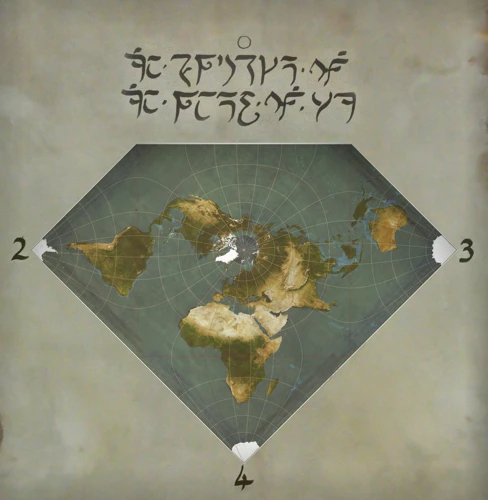
The Importance of Animals in Japanese Mythology:
– Animals hold immense significance in Japanese mythology, serving as powerful symbols that convey deep meanings and represent various aspects of human existence and the natural world. These mythical creatures are believed to possess extraordinary qualities, wisdom, and spiritual connections, making them integral parts of Japanese folklore and culture.
– In Japanese mythology, animals often play roles in creation myths, where they have the power to shape the world and influence its development. For example, the wolf is believed to have played a crucial role in the creation of Japan, as it was said to have been a companion of the sun goddess Amaterasu. The wolf symbolizes endurance, loyalty, and protection, and its presence in creation myths reflects the importance of these qualities in Japanese culture.
– Another prominent animal in Japanese creation myths is the dragon. Dragons are revered as divine beings associated with water, rainfall, and natural forces. They are seen as powerful creatures that bring abundance and prosperity to the land. The dragon’s symbolism extends beyond creation myths and is also associated with the imperial family, symbolizing their authority and wisdom.
– Animals are also seen as guardian and protective beings in Japanese mythology. The divine fox, known as the kitsune, is believed to be a messenger of the god Inari. The kitsune possesses mystical and shape-shifting abilities and is seen as both a protector and a trickster. This creature represents intelligence, transformation, and mysterious powers.
– The mythical guardian lion-dogs, known as shishi, are another example of protective animals in Japanese mythology. Often depicted as sculptures guarding temples and shrines, these lion-dogs are believed to ward off evil and bring good fortune. They symbolize strength, loyalty, and guardianship.
– Additionally, animals are revered as shapeshifters and deities in Japanese mythology. The kitsune, mentioned earlier, is known for its ability to transform into humans or other objects. They are associated with cleverness, seduction, and unpredictable nature. On the other hand, the serpent deity Orochi is seen as the guardian of waters and represents the power and mystery of the ocean. Orochi is often depicted as a multi-headed serpent, showcasing its divine status and connection to the natural world.
– Sacred animals hold a special place in Japanese mythology as well. The sacred crane, or “tsuru,” is considered a symbol of good fortune, longevity, and immortality. It is believed that anyone who folds a thousand origami cranes will be granted a wish. The magical fish, known as the koi, is a symbol of transformation, perseverance, and determination. It is often associated with overcoming obstacles and achieving success.
– Animals also feature prominently in Japanese folklore and legends. The tanuki, a mischievous and shape-shifting creature resembling a raccoon dog, is a beloved character in Japanese folklore. It is seen as a symbol of good luck, abundance, and resourcefulness. The tengu, on the other hand, is a half-human, half-bird creature known for its wisdom and martial arts skills. Tengu represent the forces of nature and are often associated with mountains and forests.
– The importance of animals in Japanese mythology cannot be understated. These creatures embody various qualities, serve as powerful symbols, and offer valuable insights into the culture and beliefs of the Japanese people. From creation myths to protective guardians, shapeshifters, and sacred beings, animals in Japanese mythology continue to captivate and inspire individuals to this day. Their symbolism and stories resonate with the deep-rooted connection between humans and the natural world, reminding us of the significance of harmony, respect, and the interplay between the seen and the unseen.
Animals in Creation Myths
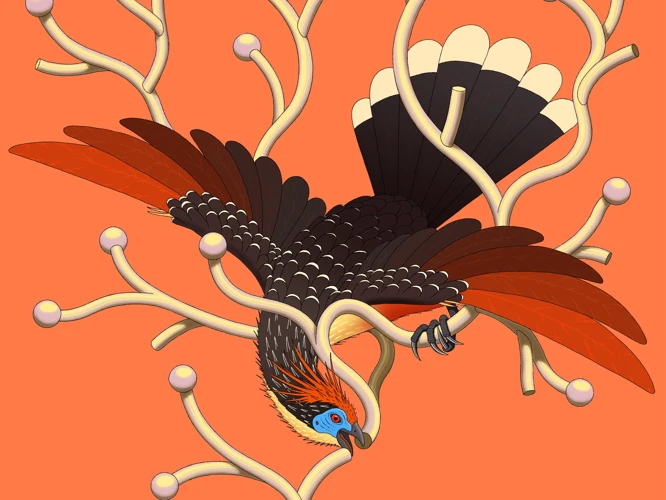
Animals in Creation Myths:
– Animals hold a significant role in Japanese creation myths, playing vital roles in shaping the world and symbolizing various qualities and forces. The wolf, known as “Ōkami,” features prominently in creation myths as a companion of the sun goddess Amaterasu. The wolf represents endurance, loyalty, and protection, portraying its importance in Japanese culture. Similarly, the dragon, or “Ryū,” holds great symbolism in creation myths and is revered as a divine creature associated with water and natural forces. Dragons are believed to bring abundance and prosperity, and their presence signifies authority and wisdom in Japanese mythology. Both the wolf and the dragon emphasize the values and qualities that the Japanese people hold in high regard – loyalty, protection, strength, and wisdom.
The Role of the Wolf in Creation Myths
The Role of the Wolf in Creation Myths:
– The wolf holds a prominent role in Japanese creation myths, particularly in relation to the sun goddess Amaterasu. According to legend, Amaterasu withdrew into a cave, plunging the world into darkness and chaos. The other gods and goddesses desperately tried to coax her out, but it was the presence of the wolf that ultimately succeeded in luring her back into the world. This act is symbolic of the wolf’s role as a mediator and guardian, using its loyalty and endurance to restore balance and light to the world.
– In Japanese culture, the wolf is revered for its loyalty and protective qualities. It is seen as a symbol of perseverance, teamwork, and unity. This symbolism is reflected in its role in creation myths, where it plays a vital part in the restoration of order and the preservation of life. The wolf exemplifies the innate instincts and qualities that are essential for maintaining harmony and balance in the natural world.
– The connection between the wolf and the sun goddess Amaterasu also highlights the spiritual significance of the wolf in Japanese mythology. Amaterasu is considered one of the most important deities in Shintoism, and the wolf’s association with her underscores its divine and sacred nature. The wolf’s presence in creation myths highlights its spiritual power and its ability to bridge the gap between humans and the divine.
– Beyond creation myths, the wolf’s symbolism extends to various aspects of Japanese culture. It is often associated with protection, guidance, and loyalty. In folklore and folktales, the wolf is portrayed as a wise and noble creature, capable of offering guidance and protection to those in need. Its fierce yet compassionate nature serves as a reminder of the importance of loyalty, teamwork, and the preservation of harmony within society.
– The role of the wolf in Japanese creation myths is a testament to its significance in the culture and belief system of the Japanese people. Its portrayal as a loyal guardian and mediator underscores the importance of these qualities in maintaining order and balance in both the natural and spiritual realms. The wolf’s symbolism encourages individuals to embrace their sense of loyalty, endurance, and protective instincts as they navigate the complexities of life. By embodying the spirit of the wolf, individuals are reminded of the interconnectedness between humans, nature, and the divine, fostering a greater sense of unity and harmony.
The Symbolism of the Dragon in Creation Myths
The Symbolism of the Dragon in Creation Myths:
– In Japanese mythology, the dragon holds a significant role in creation myths, representing power, wisdom, and the divine. Dragons are believed to be celestial beings associated with water, the heavens, and the natural forces that shape the world. Their symbolism in creation myths reflects the belief that they played a part in the formation and development of the Japanese islands.
– The dragon is often depicted as a magnificent and awe-inspiring creature with scales, sharp claws, and the ability to fly. It is seen as a guardian and mediator between the earthly and celestial realms, possessing immense knowledge and supernatural abilities. The Japanese dragon is different from its Western counterparts, as it is usually depicted as a serpentine creature with multiple heads.
– The dragon’s association with water highlights its role in ensuring the balance and harmony of the natural world. It is believed to control rainfall, rivers, and oceans, influencing the cycles of life and fertility of the land. As a result, dragons are seen as bringers of abundance, prosperity, and good fortune, reflecting the importance of water in agricultural societies.
– Beyond its role in creation myths, the dragon has a strong connection to the imperial family in Japanese culture. The dragon is often associated with the emperor, symbolizing his lineage, authority, and wisdom. Dragons can be found on the roofs of imperial palaces and other important buildings, showcasing their significance in the hierarchy of power.
– The symbolism of the dragon extends to various aspects of Japanese culture, including art, architecture, and festivals. Dragon motifs can be found in paintings, sculptures, and traditional clothing, emphasizing their revered status and enduring legacy.
– The dragon in Japanese mythology carries profound symbolism in creation myths, representing power, wisdom, and the transcendence between the earthly and celestial realms. Its association with water and natural forces underscores its role as a guardian and mediator, ensuring the balance and prosperity of the land. The dragon’s significance extends beyond mythology, permeating various aspects of Japanese culture and serving as a powerful symbol of authority and divine presence.
Guardian and Protective Animals
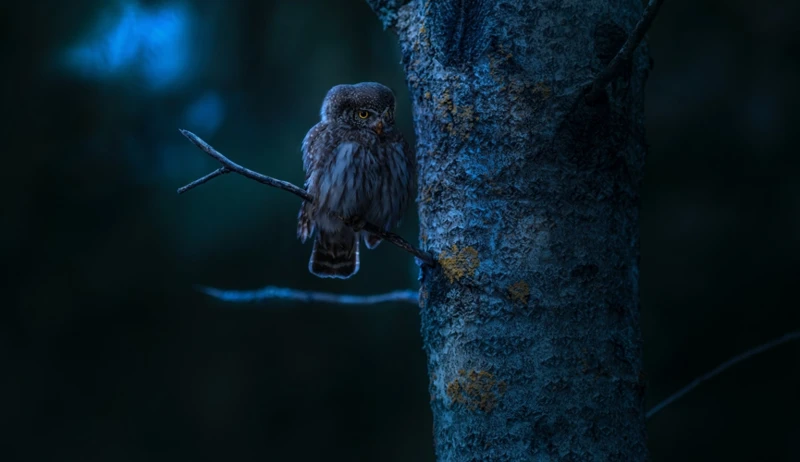
Guardian and Protective Animals:
– In Japanese mythology, certain animals are revered as guardian and protective beings, embodying qualities of strength, loyalty, and safeguarding against evil. The divine fox, known as the kitsune, holds a prominent role as a messenger of the god Inari. Kitsune are believed to possess shape-shifting abilities, intelligence, and mysterious powers, making them both protectors and tricksters. With their keen intuition and adaptability, they guide and warn individuals on their journeys. They serve as a bridge between the spiritual and human realms, offering assistance and protection to those who show respect and humility. Another significant guardian animal in Japanese mythology is the mythical lion-dog, known as the shishi. These magnificent creatures are often depicted as sculptures guarding temples and shrines, serving as protectors against malevolent spirits. With their imposing presence, the shishi symbolizes strength, guardianship, and goodwill. They are believed to bring good fortune and safeguard sacred spaces. These guardian and protective animals play a vital role in Japanese mythology, illustrating the importance of divine assistance and safeguarding against malevolent forces. Their symbolism serves as a reminder to honor and respect the unseen guardians that watch over us.
The Divine Fox, Messenger of Inari
The Divine Fox, Messenger of Inari:
– In Japanese mythology, the divine fox, known as the kitsune, holds a special place as a messenger of the Shinto god Inari. With its ability to shape-shift, the kitsune is believed to possess supernatural intelligence and magical powers. This mystical creature is often depicted with multiple tails, with the number of tails representing its age and wisdom.
– The kitsune is a symbol of intelligence, cunning, and transformation. It is said to have the power to take on human form, often appearing as a beautiful woman. The kitsune is known for its mischievous nature, playing pranks on humans while also offering wisdom and guidance. Its duality as both a trickster and a protector reflects the complexity of human nature and the blurred lines between good and evil.
– As the messenger of Inari, the kitsune is closely associated with rice, agriculture, and prosperity. Inari is considered the god of fertility, abundance, and business success. The kitsune acts as an intermediary between humans and Inari, carrying prayers and offerings to the deity. Many Inari shrines across Japan often have statues or stone foxes as representations of the divine fox.
– The kitsune is also believed to have the power to possess individuals, using their bodies to interact with the mortal realm. This possession is often seen as a form of possession for protection or guidance, further emphasizing the kitsune’s role as a guardian and spiritual guide.
– In Japanese folklore, there are different types of kitsune with various abilities and traits. The zenko kitsune is the benevolent and virtuous fox, bringing good fortune, protection, and success. On the other hand, the yako kitsune is the mischievous and malevolent fox, causing trouble and chaos. These contrasting characteristics showcase the multifaceted nature of the kitsune and its ability to influence the lives of those it encounters.
– The kitsune’s association with the god Inari and its role as a messenger highlights the significance of agriculture and prosperity in Japanese culture. It symbolizes the interdependence between humans and nature, emphasizing the importance of a harmonious relationship with the environment and the cycles of life. The kitsune’s wisdom, adaptability, and supernatural abilities serve as a reminder of the ever-changing and mysterious aspects of existence.
– To this day, the kitsune remains an iconic figure in Japanese folklore and popular culture. Its presence can be seen in various forms of media, including literature, art, and anime. The kitsune continues to captivate and intrigue individuals, representing not only the mythical realm but also the rich cultural heritage of Japan.
– The divine fox, messenger of Inari, is a captivating creature in Japanese mythology. With its shape-shifting abilities, intelligence, and association with prosperity, the kitsune serves as an intermediary between humans and the gods. Its duality as a trickster and protector adds depth to its symbolism, reflecting the multifaceted nature of the human experience. The kitsune’s enduring presence in Japanese folklore is a testament to its significance in the culture and imagination of the Japanese people.
The Mythical Guardian Lion-Dogs – Shishi
The Mythical Guardian Lion-Dogs – Shishi:
– Shishi, also known as Komainu, are mythical guardian lion-dogs that hold a prominent place in Japanese mythology and culture. They are often depicted as a pair, with one lion-dog having an open mouth (a-gyo) to symbolize birth, and the other with a closed mouth (un-gyo) to symbolize death. These magnificent creatures are believed to protect sacred places such as temples, shrines, and gates from evil spirits and bring good fortune to those who encounter them.
– The shishi are characterized by their fierce and majestic appearance. They have large, bulging eyes, bushy manes, and muscular bodies. Their ferocious expression and imposing posture serve as deterrents, warding off any malevolent entities or energies.
– These mythical creatures have deep symbolism in Japanese culture. The lion-dog itself is a blend of both leonine and canine features, representing the harmony of two powerful animal symbols. The lion is associated with strength, courage, and royalty, while the dog symbolizes loyalty, protection, and fidelity. Together, they embody attributes that are highly valued in Japanese society.
– The shishi also carry spiritual significance. They are seen as spiritual messengers and intermediaries between the divine and human realms. Believed to have the ability to detect and repel evil spirits, the presence of shishi at entrances is believed to safeguard sacred spaces and purify the environment.
– In art and architecture, the shishi are often depicted in various poses and expressions. They can be found in sculptures, paintings, and even on decorative items such as pottery and textiles. The artistic representation of the shishi can vary depending on the region and time period, with some showcasing a more lion-like appearance and others emphasizing a more dog-like form.
– The symbolism of the shishi extends beyond their guardian role. They are believed to be bringers of good fortune, prosperity, and abundance. It is common for people to make offerings to the shishi in the form of food, fruits, or coins, as a sign of respect and to seek their blessings.
– The significance of the shishi is deeply rooted in Japanese mythology and folklore. They are regarded not only as protectors but also as spiritual beings that bridge the gap between the earthly and the divine. Their presence at sacred sites and their embodiment of strength, loyalty, and good fortune make them cherished symbols in Japanese culture to this day.
– To experience the awe-inspiring presence of the shishi firsthand, one must visit the temples and shrines throughout Japan, where these mythical creatures stand tall and watch over the sacred spaces. Their majestic aura and spiritual energy continue to captivate both locals and visitors alike, immersing them in the rich tapestry of Japanese mythology and cultural heritage.
Animal Shapeshifters and Deities
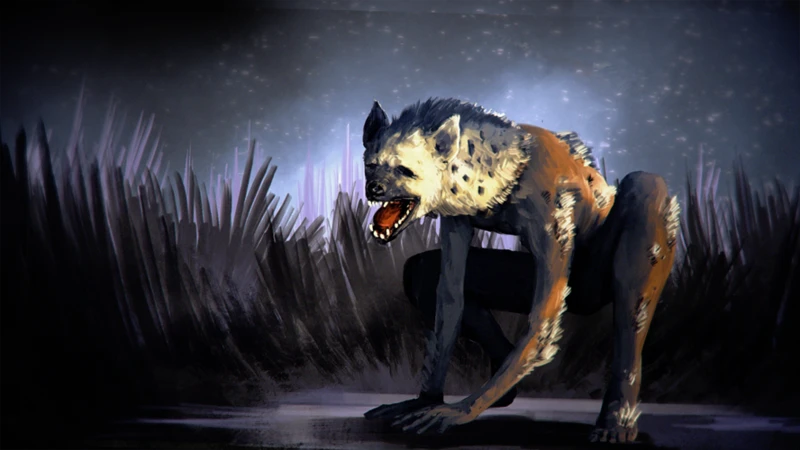
In Japanese mythology, animal shapeshifters and deities hold a prominent place, captivating the imagination with their mystical abilities and divine status. The mythical fox, known as the kitsune, takes center stage in this category. The kitsune possesses the power to transform into humans or other objects, demonstrating its shape-shifting prowess. This creature is often associated with intelligence, deceit, and unpredictability. With its ability to deceive and seduce, the kitsune represents the intricate balance between the seen and the unseen. Another significant animal deity is the serpent, specifically the revered Orochi, the guardian of waters. With its multi-headed form, Orochi symbolizes the power and mystery of the ocean. This serpent deity holds a vital role in Japanese mythology, safeguarding the waters and representing the forces of nature. Both the kitsune and Orochi exemplify the belief in the divine presence within the animal form, reminding us of the deep connections between humans and animals in Japanese culture.
The Mythical Fox – Kitsune, the Trickster
The Mythical Fox – Kitsune, the Trickster:
– In Japanese mythology, the kitsune, or the mythical fox, holds a prominent place as a fascinating and multi-faceted creature. Known for its shape-shifting abilities and mischievous nature, the kitsune is a symbol of cunningness, intelligence, and trickery.
– Kitsune are often portrayed as beautiful women with fox-like features, capable of transforming into humans or taking on other forms. This ability to deceive and manipulate their appearance contributes to their reputation as tricksters. They are known to play pranks on humans, test their wit, and sometimes even bring good fortune.
– Kitsune are also associated with the spirit world and possess supernatural abilities. In Japanese folklore, kitsune are believed to have multiple tails, with each tail signifying their age and wisdom. The more tails a kitsune has, the more powerful and wise it is considered to be.
– While kitsune are primarily known for their mischievous nature, they are not inherently evil. In fact, they can be benevolent and protective towards humans who have gained their favor. This duality of their character adds to their complexity and intrigue.
– The folklore surrounding kitsune varies across different regions in Japan. In some tales, kitsune are seen as wise and noble beings who provide guidance to those in need. They are believed to possess deep knowledge of the supernatural, and humans who are able to earn their trust may receive valuable wisdom and assistance.
– Interestingly, kitsune are often associated with Inari, the god of rice and fertility. They are seen as messengers and servants of Inari, acting as intermediaries between the mortal world and the divine realm. Kitsune are commonly depicted in Japanese art and folklore, highlighting their enduring presence in Japanese culture.
– The symbolism of the kitsune extends beyond their trickster nature. They also represent qualities such as adaptability, transformation, and resilience. Just as the kitsune is able to change its appearance, it reminds us of the importance of embracing change and adapting to different circumstances in life.
– The kitsune holds a distinct place in Japanese mythology as the mythical fox and trickster. Its cunningness, shape-shifting abilities, and mischievous nature make it a captivating and enigmatic creature. The tales surrounding kitsune serve as both cautionary tales and sources of fascination, highlighting the intricate relationship between humans and the spirit world. The kitsune’s presence in Japanese folklore and art continues to intrigue and enchant individuals, showcasing the enduring power of mythical creatures in shaping cultural beliefs and narratives.
The Serpent Deity – Orochi, Guardian of Waters
The Serpent Deity – Orochi, Guardian of Waters:
– Orochi is a prominent serpent deity in Japanese mythology, known as the guardian of waters and a symbol of power and mystery. This mythical creature is often depicted as a massive, multi-headed serpent, with each head possessing its own unique abilities and characteristics. Orochi is believed to reside in bodies of water such as rivers, lakes, and oceans, commanding the forces of nature and overseeing the flow of water throughout the land.
– In Japanese folklore, Orochi is associated with various stories and legends, often portraying its immense power and the challenges faced by those who dare to confront it. One famous tale involving Orochi is the legend of Susanoo, a powerful deity who defeated the serpent and saved a village from its wrath. This legend highlights the significance of Orochi as a force to be reckoned with, capable of wreaking havoc and destruction if left unchecked.
– The symbolism of Orochi as the guardian of waters reflects the vital role that water plays in Japanese culture and agriculture. In a society heavily dependent on agriculture, water holds immense importance as a life-giving and sustaining force. Orochi’s presence as a deity associated with water signifies the recognition of the tremendous power and awe-inspiring nature of this essential element.
– Beyond its association with water, Orochi also embodies notions of mystery and the unknown. The serpent’s ability to navigate through hidden depths and its connection to the unseen realms represent the enigmatic aspects of life that humans may not fully comprehend. Orochi is seen as a bridge between the mortal realm and the spiritual world, embodying the duality and interconnectedness of existence.
– The depiction of Orochi as a multi-headed serpent conveys its divine nature and formidable presence. Each head represents a different aspect of Orochi’s powers, such as control over storms, tides, and currents. This imagery emphasizes the serpent’s ability to command natural forces and underscores its role as a guardian and protector of the water realm.
– As a symbol in Japanese mythology, Orochi reminds us of the awe-inspiring power and beauty of nature, particularly in its water forms. It serves as a reminder of the delicate balance between humans and the natural world, urging respect and reverence for the forces that sustain life. Orochi’s presence in mythology also invites contemplation on the mysteries of existence, encouraging individuals to embrace the unknown and appreciate the interconnectedness of all things in the world.
– The serpent deity Orochi holds a significant place in Japanese mythology as the guardian of waters. Through its symbolism and mythical tales, Orochi embodies the untamed power of water, the mysteries of the unseen, and the interconnectedness of all life. Its presence in Japanese culture reminds us of the need to respect and protect the natural world while embracing the profound beauty and wonder that lie within it.
Sacred Animals and Their Significance
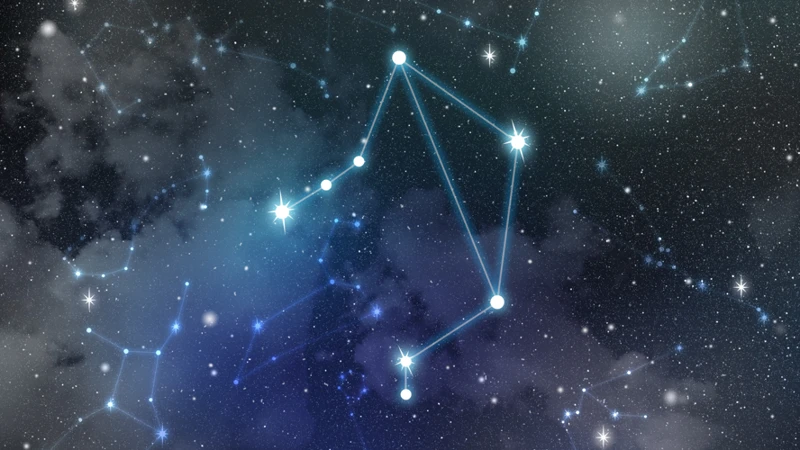
Sacred Animals and Their Significance:
– In Japanese mythology, certain animals hold a sacred status and are revered for their symbolic meanings and associations. One such sacred animal is the crane, known as the “tsuru.” These elegant birds are considered symbols of good fortune, longevity, and immortality. The crane is believed to bring blessings and is associated with peace and harmony. In Japanese culture, folding a thousand origami cranes is a popular practice that is said to grant a wish. The beauty and grace of the crane make it an enchanting symbol of hope and fulfillment.
– Another significant sacred animal is the koi fish. The koi is highly regarded as a symbol of transformation, perseverance, and determination. These colorful fish are often associated with overcoming obstacles and achieving success. In Japanese folklore, it is believed that if a koi fish can swim up a waterfall, it will transform into a powerful dragon. This transformation represents the pursuit of personal growth and the realization of one’s true potential. The koi fish serves as a reminder to never give up and to keep striving for greatness.
– The sacredness of these animals extends beyond their physical attributes. They embody deep spiritual meanings that resonate with the human experience. The crane and the koi fish symbolize qualities and values that are cherished in Japanese culture, such as resilience, patience, and the pursuit of inner transformation. These sacred animals serve as reminders of the interconnectedness of all things and the power of nature to inspire and guide humanity. The symbolism associated with the crane and the koi fish continues to captivate individuals, offering profound insights into the human journey and the pursuit of a meaningful existence.
The Sacred Crane – Symbol of Good Fortune
The Sacred Crane – Symbol of Good Fortune:
– The sacred crane, known as the “tsuru” in Japanese mythology, holds a special place as a symbol of good fortune and longevity. This elegant bird is highly revered and considered to bring blessings, happiness, and prosperity to those it encounters.
– In Japanese culture, the crane is believed to live for a thousand years, making it a symbol of longevity and immortality. Its graceful and majestic presence is seen as a representation of the noble and divine qualities. The crane is often associated with the gods and the heavens, acting as a messenger between the mortal world and the divine realm.
– The imagery of the crane is prominent in various aspects of Japanese art, literature, and folklore. In traditional Japanese origami, folding a thousand paper cranes, known as “senbazuru,” is believed to grant a wish or bring good luck. This origami tradition gained popularity through the inspiring story of Sadako Sasaki, a young girl who folded cranes while battling leukemia as a symbol of hope and peace.
– The crane’s symbolism extends beyond its association with good fortune and longevity. It is also seen as a symbol of fidelity, love, and harmony. The crane is known for its lifelong pairing with a single mate, reflecting the values of commitment and loyalty in relationships.
– The crane is closely tied to Japanese folklore and mythology. In the famous Japanese folktale, “Tsuru no Ongaeshi” or “The Gratitude of the Crane,” a crane transforms into a beautiful woman to repay the kindness shown by a humble fisherman. This story emphasizes the connection between humans and nature and the rewards of kindness and compassion.
– Additionally, the crane holds significance in Japanese religious practices. It is often depicted in traditional Shinto weddings, symbolizing good fortune and a blissful marriage. The crane’s symbolism is also associated with the concept of “makoto,” meaning sincerity and honesty, which are highly valued virtues in Japanese society.
– The sacred crane’s presence in Japanese mythology and culture serves as a reminder of the importance of embracing positivity, longevity, and harmony in life. Its timeless symbolism continues to inspire and uplift individuals, encouraging them to seek blessings, appreciate beauty, and strive for a fulfilling and fortunate existence.
– The sacred crane is not just a bird in Japanese mythology but a powerful symbol of good fortune and longevity. Its graceful nature and association with blessings and prosperity have made it an iconic representation of positive energies in Japanese culture. Whether seen in folklore, traditions, or art forms, the sacred crane continues to mesmerize and inspire with its awe-inspiring presence and timeless symbolism.
The Magical Fish – Koi, a Symbol of Transformation
The Magical Fish – Koi, a Symbol of Transformation:
– The koi fish holds a special place in Japanese mythology as a symbol of transformation, perseverance, and determination. This majestic creature has a long history of significance in Japanese culture and is often associated with overcoming obstacles and achieving success. The koi fish is renowned for its ability to swim upstream and even leap over waterfalls to reach its destination, making it a powerful representation of resilience and the pursuit of one’s goals.
– Koi fish are commonly found in Japanese art, particularly in traditional paintings, and are highly revered for their vibrant colors and graceful movements. These fish come in various hues, each carrying its own symbolism. The red koi symbolizes love and passion, the black koi represents overcoming adversity, the blue koi signifies serenity and tranquility, the yellow koi is associated with wealth and prosperity, and the white koi represents purity and spiritual transformation.
– According to Japanese legend, there is a mythical waterfall called the “Dragon’s Gate” where koi fish have the opportunity to transform into dragons. The story goes that if a koi fish is able to successfully swim upstream and reach the top of the waterfall, it will undergo a metamorphosis and transform into a powerful dragon. This belief reflects the koi’s journey of personal growth and transformation, from a humble fish to a majestic and revered creature.
– The symbolism of the koi fish as a representation of transformation extends beyond the physical realm. It also signifies personal and spiritual growth, as individuals strive to overcome challenges and transform themselves into better versions. The koi fish serves as a reminder of the importance of perseverance, resilience, and embracing change in order to reach one’s full potential.
– In Japanese culture, the koi fish is also associated with good luck and fortune. Many people believe that having a koi pond or displaying koi fish imagery in their homes or businesses will bring prosperity, abundance, and positive energy. This belief has led to the popular practice of keeping koi fish in ornamental ponds, where they are admired for their beauty and symbolic meaning.
– The koi fish’s symbolism of transformation and determination has transcended its roots in Japanese mythology and has become a popular motif worldwide. It is often seen in tattoos, where it represents personal growth, resilience, and the ability to overcome life’s challenges. The koi fish’s captivating presence and profound symbolism continue to inspire individuals to embrace change, persevere in the face of adversity, and embark on their own transformative journeys.
– The koi fish is a powerful symbol of transformation in Japanese mythology and culture. Its ability to swim upstream, overcome obstacles, and eventually transform into a dragon exemplifies the ideals of perseverance, personal growth, and the pursuit of one’s dreams. The koi fish serves as an inspiration to individuals facing challenges in their own lives, reminding them of the importance of resilience, determination, and the belief that transformation is possible. Whether seen in art, admired in ornamental ponds, or depicted in tattoos, the koi fish continues to captivate and convey its timeless message of transformation and triumph.
Animals in Folklore and Legends
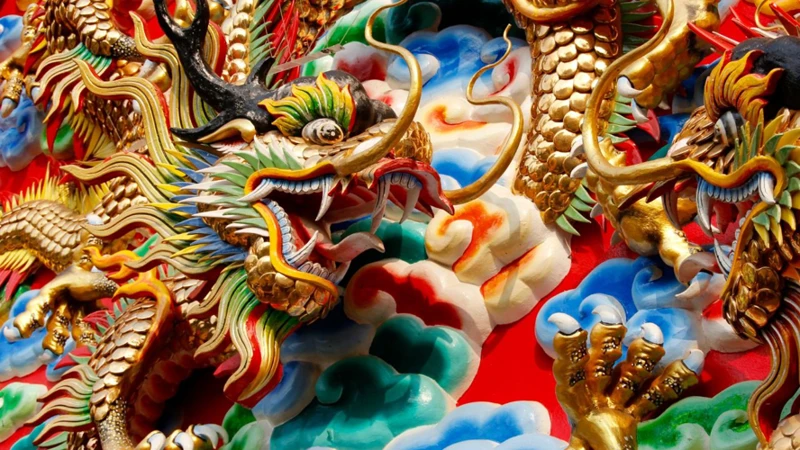
Animals in Folklore and Legends:
Animals play a prominent role in Japanese folklore and legends, further enriching the tapestry of mythology in this captivating culture. One such legendary creature is the tanuki, a mischievous and shape-shifting creature resembling a raccoon dog. The tanuki is a beloved character known for its playful nature and ability to transform into various objects. In folklore, the tanuki is often depicted as wearing a straw hat and carrying a bottle of sake, symbolizing its love for indulgence and merry-making. This creature is revered as a symbol of good luck, abundance, and resourcefulness, and its mischievous escapades are a source of joy in Japanese folklore. Another significant creature is the tengu, a half-bird, half-human creature with extraordinary abilities. Tengu are known for their wisdom, martial arts skills, and connection to mountains and forests. They symbolize the forces of nature and serve as both a source of awe and fear. The intriguing stories and mystical creatures found in Japanese folklore provide a glimpse into the cultural beliefs and values cherished by the Japanese people throughout history.
The Legend of the Tanuki – Japanese Raccoon Dog
The Legend of the Tanuki – Japanese Raccoon Dog:
– In Japanese folklore, the tanuki, also known as the Japanese raccoon dog, holds a special place as a beloved and mischievous character. The tanuki is a creature that resembles both a fox and a raccoon, possessing a plump body, a mischievous grin, and a famously large pair of testicles. These creatures are known for their shape-shifting abilities and their playful nature.
– Tanuki are often depicted as tricksters, using their magical powers to transform into objects or people to create mischief and confusion. They are notorious for their pranks and trickery, playing tricks on humans and other animals alike. These mischievous acts have made the tanuki a popular character in Japanese folklore, with many stories and legends featuring their antics.
– Despite their reputation as tricksters, tanuki are also seen as symbols of good luck and abundance. In some regions of Japan, stone statues of tanuki can be found outside shops and restaurants, believed to bring prosperity and good fortune to the business. These statues often depict the tanuki holding a sake flask, a promissory note, and wearing a straw hat, representing their playful and jovial nature, as well as their association with wealth and prosperity.
– The tanuki’s ability to transform into different forms is not only used for pranks but also for survival. They are known to transform into other animals or even objects to escape danger or to deceive their predators. This shape-shifting ability symbolizes adaptability and resourcefulness, reminding us of the importance of flexibility and quick thinking in navigating life’s challenges. The tanuki’s legend serves as a reminder that things are not always what they seem, and that we should approach life’s surprises with a sense of humor and open-mindedness.
– In popular culture, the tanuki has gained recognition outside of Japan as well. They have been featured in various forms of media, including anime and video games. One popular representation of the tanuki can be found in the Studio Ghibli film, “Pom Poko,” where they are portrayed as shape-shifting creatures who band together to preserve their forest home. This film showcases the tanuki’s mischievous nature as well as their connection to nature and the environment.
– The legend of the tanuki continues to captivate and entertain people of all ages. These creatures embody both the playful trickster and the symbol of good fortune, displaying the complexities of human nature and the delicate balance between mischief and well-being. Whether they appear in folktales, statues, or popular culture, the tanuki remain a beloved and celebrated character in Japanese mythology, reminding us of the power of laughter, adaptability, and embracing the unexpected in our own lives.
The Importance of the Tengu – Half-Bird, Half-Human Creatures
The Importance of the Tengu – Half-Bird, Half-Human Creatures:
– The Tengu are fascinating creatures in Japanese mythology, known for their unique appearance as half-bird and half-human beings. They hold a significant place in Japanese folklore and are considered to be powerful and influential entities. Tengu are portrayed as bird-like creatures, often depicted with wings, beaks, and talons, while still possessing a humanoid form. This distinctive blend of avian and human characteristics makes them both captivating and mysterious.
– Tengu are associated with mountains and forests, and they are believed to possess great supernatural powers and knowledge. They are known for their intelligence, martial arts skills, and their ability to shape-shift into various forms. Tengu are often depicted as tricksters, skilled warriors, and sometimes as teachers or guardians of esoteric knowledge.
– In Japanese folklore, the Tengu symbolize the forces of nature and the spiritual world. They are seen as guardians of mountains and are thought to be protectors of Buddhist temples, challenging those who dare to enter with spiritual tests or physical trials. Tengu are believed to have the ability to manipulate the wind and create storms, further emphasizing their connection to nature.
– The Tengu’s importance in Japanese mythology extends beyond their physical appearance and abilities. They are often associated with human virtues such as discipline, loyalty, and perseverance. It is believed that those who possess these qualities may catch the attention of the Tengu and receive their blessings or teachings. Tengu are also known for their strict adherence to a code of conduct, emphasizing the importance of honor and righteousness.
– One famous Tengu in Japanese folklore is the long-nosed Tengu, known as the Daitengu. This variant of the creature is depicted with an elongated nose and is associated with wisdom and spirituality. Daitengu are often featured in stories as wise sages or spiritual guides, offering advice and guidance to those seeking enlightenment or knowledge.
– The Tengu’s significance can also be seen in their portrayal in various forms of Japanese art, literature, and theater. From woodblock prints to Noh plays, the Tengu’s presence is often depicted with intricate detail and symbolism, adding depth to their mythological importance.
– The Tengu’s half-bird, half-human form and their association with mountains, knowledge, and the spiritual realm make them intriguing and powerful figures in Japanese mythology. Their influence extends beyond their physicality, representing qualities and teachings that are highly valued in Japanese culture. The Tengu serve as a reminder of the interplay between the human and natural worlds, showcasing the connection between spirituality, discipline, and the forces of nature.
Conclusion
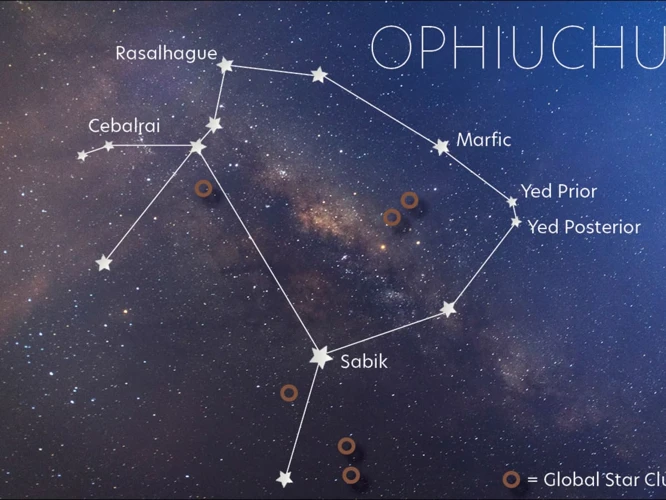
Conclusion:
– Animals hold a significant place in Japanese mythology, acting as symbols that convey profound meanings and represent various aspects of human existence and the natural world. Throughout creation myths, animals like the wolf and the dragon played vital roles in shaping the world and embodying qualities such as loyalty, protection, and wisdom. Guardian and protective animals, such as the divine fox and the mythical lion-dogs, represent intelligence, transformation, and guardianship. Shapeshifters and deities, like the kitsune and the serpent deity Orochi, portray the unpredictable nature of these creatures and their connection to the divine and natural realms.
– Sacred animals, such as the crane and the koi fish, carry powerful symbolism of good fortune, longevity, and perseverance. Animals also feature prominently in Japanese folklore and legends, with creatures like the tanuki and the tengu captivating audiences with their mischievousness, resourcefulness, and wisdom.
Understanding the importance of animals in Japanese mythology provides a window into the culture, beliefs, and values of the Japanese people. The deep reverence for animals reflects the interconnectedness between humans and the natural world, reminding us of the need for harmony, respect, and balance. Whether it is the symbolism of the animals in creation myths, their role as protective spirits, or their significance as shapeshifters and deities, the animals in Japanese mythology continue to enchant and inspire individuals to this day. Exploring these mythical creatures invites us to appreciate the beauty and complexity of Japanese mythology and the profound connection between humans and the animal kingdom.
Frequently Asked Questions

FAQs about the Symbolism of Animals in Japanese Mythology:
1. What role do animals play in Japanese mythology?
Animals in Japanese mythology serve as powerful symbols representing various qualities, deities, and aspects of the natural world. They play important roles in creation myths, act as protective beings, and are revered as shapeshifters and sacred creatures.
2. Are there any specific animals associated with creation myths in Japanese mythology?
Yes, the wolf is associated with the creation of Japan and is seen as a companion of the sun goddess Amaterasu. The dragon also plays a significant role in creation myths, symbolizing water, rainfall, and natural forces.
3. How are animals seen as protective beings in Japanese mythology?
Animals like the divine fox (kitsune) and the mythical guardian lion-dogs (shishi) are considered protective beings. They ward off evil, bring good fortune, and guard sacred spaces like temples and shrines.
4. What is the significance of the kitsune in Japanese mythology?
The kitsune is a shape-shifting creature that serves as a messenger of the god Inari. It represents intelligence, transformation, and possesses mystical powers. The kitsune is both a protector and a trickster in Japanese mythology.
5. What is the role of the serpent deity Orochi in Japanese mythology?
Orochi is seen as the guardian of waters and symbolizes the power and mystery of the ocean. It is often depicted as a multi-headed serpent, showcasing its divine status and connection to the natural world.
6. What do sacred animals symbolize in Japanese mythology?
Sacred animals like the crane (tsuru) symbolize good fortune, longevity, and immortality. The magical fish, koi, represents transformation, perseverance, and overcoming obstacles.
7. Are there specific animals that appear in Japanese folklore and legends?
Yes, the tanuki, a mischievous creature resembling a raccoon dog, is a popular character in Japanese folklore. It is seen as a symbol of luck, abundance, and resourcefulness. The tengu, a half-human, half-bird creature, is known for its wisdom and martial arts skills.
8. Do animals in Japanese mythology have connections to specific locations?
Yes, certain animals like the tengu are often associated with mountains and forests, representing the forces of nature. These location-specific associations add depth and meaning to their symbolism in Japanese mythology.
9. How do animals in Japanese mythology reflect the beliefs and values of the Japanese people?
The symbolism of animals in Japanese mythology provides insights into the values and beliefs of the Japanese culture. Animals represent qualities such as loyalty, protection, intelligence, and the interconnectedness between humans and nature.
10. Can we find representations of these animals in modern Japanese society?
Yes, many of these animals are still represented and celebrated in modern Japanese society. For example, the kitsune is a popular figure in books, anime, and folklore. Additionally, the crane and koi fish are frequently depicted in artworks, textiles, and traditional celebrations.
References
- Japanese Symbolic Animals and their Meanings
- Japanese animals: mythology and symbolism
- Japanese Symbolic Animals and Plants and their Meaning
Frequently Asked Questions

What is the significance of animals in Japanese mythology?
Animals play a significant role in Japanese mythology as symbols of various qualities, characteristics, and powers. They are often seen as divine beings, protectors, and intermediaries between the human and spiritual realms.
Are animals featured in Japanese creation myths?
Yes, animals are indeed featured in Japanese creation myths. They are seen as integral to the process of world formation and often represent specific elements of nature or embody important cosmic forces.
What role does the wolf play in Japanese creation myths?
In Japanese creation myths, the wolf is believed to have played a crucial role in shaping the world. It is often associated with the creation of land, light, and vegetation, symbolizing strength, endurance, and fertility.
How is the dragon symbolized in Japanese creation myths?
The dragon holds great symbolism in Japanese creation myths. It is often portrayed as a powerful and transformative creature associated with water, rain, and the cycles of life. The dragon represents wisdom, strength, and the harmony between heaven and earth.
What is the significance of the divine fox in Japanese mythology?
The divine fox, known as the Kitsune, is a messenger of Inari, the Shinto god of fertility and prosperity. It represents intelligence, cunning, and magical abilities. The Kitsune is revered as a guardian and bringer of good fortune.
Who are the mythical guardian lion-dogs in Japanese mythology?
The mythical guardian lion-dogs, known as Shishi or Komainu, serve as protectors of sacred places such as temples and shrines. They symbolize strength, loyalty, and ward off evil spirits. One lion-dog usually has an open mouth (pronouncing the sound “ah”) to keep away evil, while the other has a closed mouth (pronouncing the sound “um”) to keep in the good.
What is the role of the mythical fox – Kitsune, in Japanese mythology?
The Kitsune, a mythical fox, plays the role of a trickster in Japanese mythology. It possesses shape-shifting abilities and is often portrayed as a mischievous and cunning creature. It can bring blessings or cause mischief depending on the situation.
Who is Orochi, the serpent deity in Japanese mythology?
Orochi is a powerful serpent deity in Japanese mythology. It is often depicted as a giant eight-headed and eight-tailed snake. Orochi is associated with water and is considered the guardian of rivers, lakes, and seas.
What does the sacred crane symbolize in Japanese culture?
The sacred crane holds immense symbolism in Japanese culture, representing longevity, good fortune, and happiness. It is also associated with harmony, peace, and the mystical world. Cranes are considered sacred creatures and a symbol of divine grace and beauty.
What does the koi fish symbolize in Japanese mythology?
The koi fish, also known as “Nishikigoi,” is a symbol of transformation and perseverance. It represents the ability to overcome adversity and achieve success. In Japanese folklore, it is believed that if a koi fish can climb a waterfall, it will transform into a powerful dragon.







